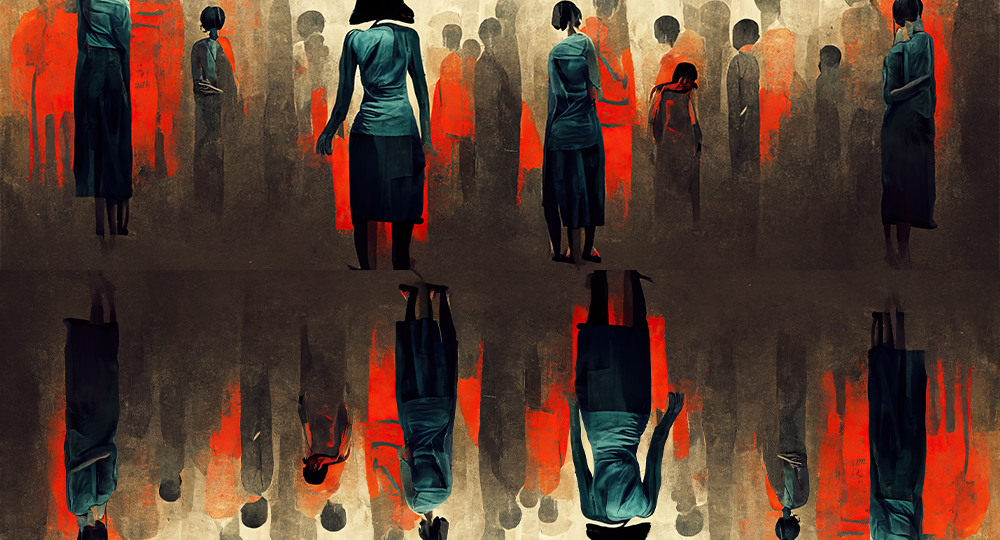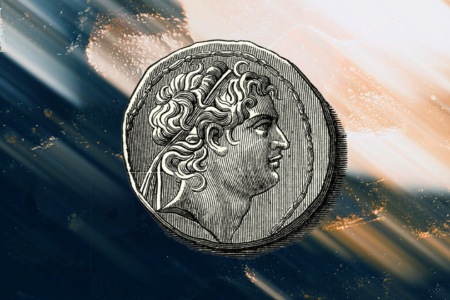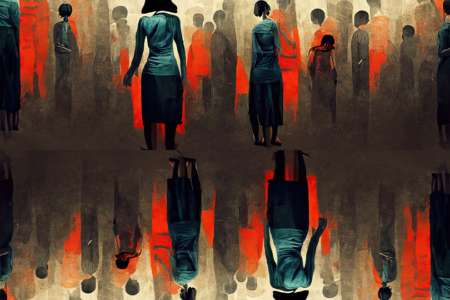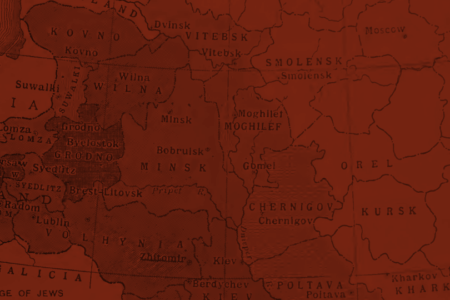‘Away With Them!’
Jewish people have been expelled from country after country in yet another method of Jewish ethnic cleansing.
“Get off my land. This is still my home, my land. Get off my land.”
This passionate statement by Tevye the Jewish milkman comes from the 1970s blockbuster Broadway musical Fiddler on the Roof. A constable informs Tevye that all Jewish residents of the little Russian shtetl (village) of Anatevka have three days to pack up and leave their homes forever. The tsar is expelling the Jews.
Where would they go? What could they take with them? Would they even survive?
Fiddler on the Roof is fictional, but it resonates with the sad truth of Jewish history. The story was borrowed from beloved Yiddish storyteller Sholem Aleichem (1859–1916), who grew up in a shtetl in the Russian Empire and knew the sting of antisemitism.
Why do some people hate Jews? Many don’t have a reason. They simply hate Jews for being Jews. As the psalmist wrote, “Those who hate me without a cause are more than the hairs of my head” (Ps. 69:4).
Antisemitism has precipitated some of the most horrific atrocities in world history. Slavery, property confiscation, forced conversions, military crusades, libels, confinements, beatings, torture, persecution, and genocide all have dogged the footsteps of God’s Chosen People for millennia.
But there’s another form of Jew-hatred and ethnic cleansing they’ve also experienced: forced displacement, or expulsion.
The Scattering of God’s Sheep
Although today’s Jewish population of 15 million accounts for barely two tenths of 1 percent of the world population, Jews can be found around the globe in what is known as the Diaspora (the dispersion).
Through Moses, God warned His Chosen People about the consequences of disobedience:
You shall be plucked from off the land which you go to possess. Then the LORD will scatter you among all peoples, from one end of the earth to the other. . . . And among those nations you shall find no rest, nor shall the sole of your foot have a resting place (Dt. 28:63–65).
Sometimes Jewish people fled their homes to avoid being murdered. But often, as in the fictional shtetl of Anatevka, government or religious officials simply expelled them en masse.
The major dispersion began after the Romans destroyed the Second Temple in AD 70 and Roman Emperor Tiberius (r. AD 14–37) banished all Jews from Rome.1 Some 30 years later, Emperor Claudius (r. AD 41–54) again expelled them from Rome (Acts 18:1–2), apparently over disturbances between them and Christians.2 But these expulsions were merely the beginning.
As a result of the first Jewish war against the Romans (AD 66–73), 97,000 Jewish people were carried into captivity.3 During another failed revolt against Roman occupation (AD 132–135), thousands were sold into slavery and dispersed throughout the Roman Empire. “So many Jews were enslaved that at the Hebron slave market they fetched less than [the price of] a horse,” wrote one historian.4
After virtually destroying Jerusalem, Roman Emperor Hadrian renamed the area Aelia Capitolina and banned all Jews on threat of death; then he built on the ruins of Jerusalem and the Temple Mount.
In 624, probably because they refused to convert to Islam, the Muslim prophet Muhammad exiled hundreds of Jews from Medina in Saudi Arabia in an event known as the Banu Qaynuqa.5
In the centuries that followed, Jewish people were expelled from cities and kingdoms throughout medieval “Christian Europe,” including Germany, Austria, Hungary, the Papal States, and Italy. One such ill-famed expulsion resulted from the edict of English King Edward I (of William Wallace [Braveheart] fame) in 1290. Thousands were evicted from their homes and forbidden to return to England for almost 400 years. In 1394, King Charles VI expelled all Jews from France.
The Largest Expulsion
However, the most infamous expulsion occurred in Spain. On March 31, 1492, King Ferdinand and Queen Isabella signed the Alhambra Decree (Edict of Expulsion),6 which was not made public until May 1, shortly after they commissioned Christopher Columbus to embark on his historic voyage to the New World.
The Alhambra Decree threw the Jews out of Spain lock, stock, and barrel, adding that any who remained would “incur the penalty of death and the confiscation of all their possessions.” They had until August 1 (9th of the Hebrew month Av) to comply. This expulsion dismembered the largest Jewish community in the world at the time.
The decree was intended to prevent practicing Jews from enticing converted Jews to abandon Catholicism and return to Judaism. During the previous 12 years, Ferdinand and Isabella instituted the Spanish Inquisition to purge heretics from their midst.
The Roman Catholic Church had used official inquisitions long before the Spanish Inquisition had its first auto-de-fe (“act of faith” public-penance ritual of convicted heretics) in 1481. But the Spanish Inquisition became notorious for its cruelty, torture (to extract confessions), and burning-alive executions. By the time it ended in 1834, “an estimated 31,912 heretics [mostly Jews, converted Jews, converted Muslims, and Protestants] were burned at the stake.”7
Ferdinand and Isabella believed the Inquisition ferreted out Jews who “perverted” Jewish converts to Catholicism and “enticed” them to disgrace “our holy Catholic faith.” Convinced that all of Spain’s previous measures—Jewish ghettos, localized expulsions, and Inquisition tortures—were insufficient to correct so great an “opprobrium [disgrace] and offense to the faith and the Christian religion,” they resorted to a more definitive corrective: expelling the entire Jewish community, some 200,000 people, from Spain.8
However, the Alhambra Decree smacks of a possible ulterior motive: It said the Jews could sell or take their possessions with them “as long as they do not export gold or silver or coined money.” In effect, the expulsion also involved official, governmental extortion.
The Jews of Spain couldn’t win: They could (1) convert to Catholicism; (2) maintain their Jewish faith but leave behind everything they’d ever known or owned, hoping some country would admit them; or (3) remain Jewish, stay in Spain, and be killed.
Tens of thousands converted. Several hundred thousand left. The expulsion from Spain, where earlier the Jewish people had experienced a “Golden Age,” was one of the darkest chapters in Jewish history.
Then Came Martin Luther
It wasn’t only Catholics who advocated expelling the Jews. In 1543, Martin Luther, leader of the Protestant Reformation, wrote a 13-part booklet titled On the Jews and Their Lies.
It spewed such vitriolic hatred of the Jewish people that it influenced the German perception of Jews for centuries to come and helped Adolf Hitler and the Nazis justify their “final solution to the Jewish question,” a euphemism for the annihilation of European Jewry.
Toward the beginning of his ministry, Luther was more congenial toward the Jewish community, thinking Jews might believe the gospel after he restored the doctrine of justification by faith. But when they failed to accept the gospel, he began to despise them.
He wrote On the Jews and Their Lies three years before he died. It is a polemic against a Jewish publication in which the author debates an imaginary Christian. Luther not only challenged the Jewish author’s interpretation of Scripture but also vented his animosity toward all Jews. He held nothing back. “Next to the devil,” Luther wrote, “a Christian has no more bitter and galling foe than a Jew.”
He called Jewish people “venomous, bitter, vindictive, tricky serpents, assassins, and children of the devil who sting and work harm stealthily wherever they cannot do it openly.” He also gave credence to the commonly accepted libels of the day that Jewish people kidnapped and mutilated Christian children and deliberately poisoned wells. (This very libel led to the massacre of thousands of European Jews during the Black Death plague in the mid-14th century.)
Luther had lost patience with the Jews and given up on them coming to faith in Christ. In his mind, the only course of action was for the civil authorities to destroy all synagogues, schools, and Jewish homes and to “eject them [the Jews] forever from the country. . . . Away with them!”
. . . so that you and we all can be rid of the unbearable, devilish burden of the Jews. . . . In my opinion the problem must be resolved thus: If we wish to wash our hands of the Jews’ blasphemy and not share in their guilt, we have to part company with them. They must be driven from our country. . . . We must drive them out like mad dogs, so that we do not become partakers of their abominable blasphemy and all their other vices.9
When the Nazis rose to power in the mid-1930s and implemented their racist policies, they particularly targeted the Jewish community. They made the lives of German and Austrian Jews so miserable between 1938 and 1940 that 60 percent of them, more than 400,000 people, fled and sought refuge elsewhere. When the Nazis officially slammed the door of emigration closed in October 1941, the Jewish people’s fate was sealed.
In the Nazis’ effort to make their empire Judenrein (“cleansed of Jews”), they deported European Jews to ghettos, concentration camps, and death camps. Millions were dispossessed of their belongings, wealth, families, and lives.
In the years surrounding the rebirth of Israel in 1948, as well as after the 1967 Six-Day War, Arab nations and Iran took a page from the Nazi playbook. They persecuted their Jewish communities to such a severe degree with threats, confiscation of property, and violence that more than 850,000 Jews fled for their lives. Most went to the new State of Israel. In today’s dollars, the value of property these Jewish refugees left behind is estimated to be in the billions.10
These are merely a few examples of antisemitic expulsions. Sadly, many more exist. It’s hard to imagine the heartache of experiencing a hatred so deep it forces you to constantly uproot your life and flee to who-knows-where. As Moses predicted, “Your life shall hang in doubt before you; you shall fear day and night, and have no assurance of life” (Dt. 28:66).
The Gathering of God’s Sheep
However, God sees what has been done to His people Israel. And, unlike governments that turn a blind eye, He will not let antisemitism pass without bringing justice:
I will also gather all nations, and bring them down to the Valley of Jehoshaphat; and I will enter into judgment with them there on account of My people, My heritage Israel, whom they have scattered among the nations (Joel 3:2).
God not only sees, but His heart beats with tender compassion. He promises to restore Israel fully to its homeland. One day He will gather His scattered people as a shepherd gathers his sheep:
For the Lord GOD says this: “Behold, I Myself will search for My sheep and look after them. As a shepherd cares for his flock on a day when he is among his scattered sheep, so I will care for My sheep and will rescue them from all the places where they were scattered on a cloudy and gloomy day. I will bring them out from the peoples and gather them from the countries and bring them to their own land; and I will feed them on the mountains of Israel, by the streams, and in all the inhabited places of the land. I Myself will feed My flock and I Myself will lead them to rest,” declares the Lord GOD (Ezek. 34:11–13, 15, NASB).
When that day comes, Jewish people will not be forced from their homes and land ever again. They will live safely in their Anatevkas forever.
Tevye would be pleased.
ENDNOTES
Josephus, Antiquities 18.3.5 (18:81–84); C. Suetonius Tranquillus, The Lives of the Twelve Caesars, an English translation, “Tiberius,” chap. 36, ed. Alexander Thomson (Philadelphia, PA: Gebbie & Co, 1889.), Perseus Digital Library (tinyurl.com/5n87nes5).
-
- C. Suetonius Tranquillus, The Lives of the Twelve Caesars, an English translation, “Divus Claudius,” chap. 25,” ed. Alexander Thomson (Philadelphia, PA: Gebbie & Co., 1889), Perseus Digital Library (tinyurl.com/3m5jartx).
- Josephus, War 6.9.3 (6:420).
- Simon Sebag Montefiore, Jerusalem: The Biography (New York, NY: Alfred A. Knopf, 2011), 143.
- A. Guillaume, The Life of Muhammad: A Translation of Ishaq’s Sirat Rasul Allah (Oxford, England: Oxford University Press, 1955), 363.
- “Edict of the Expulsion of the Jews (1492),” trans. Edward Peters (sephardicstudies.org/decree.html).
- “Christian-Jewish Relations: The Inquisition,” Jewish Virtual Library (jewishvirtuallibrary.org/the-inquisition).
- Celia Prados Garcia, “La expulsión de los judíos y el retorno de los sefardíes como nacionales españoles. Un análisis histórico-jurídico,” in F. J. García Castaño and N. Kressova (Coords.), Actas del Primer Congreso Internacional de Migraciones de Andalucía (Grenada: Institute of Migrations, 2011), 2,119–2,126.
- Martin Luther, On the Jews and Their Lies, Parts 11–12 (1543), in “Primary Texts on History of Relations” Dialogika Resources (tinyurl.com/2p9nwe72).
- “Fact Sheet: Jewish Refugees From Arab Countries,” Jewish Virtual Library (tinyurl.com/97f9hs5n).








